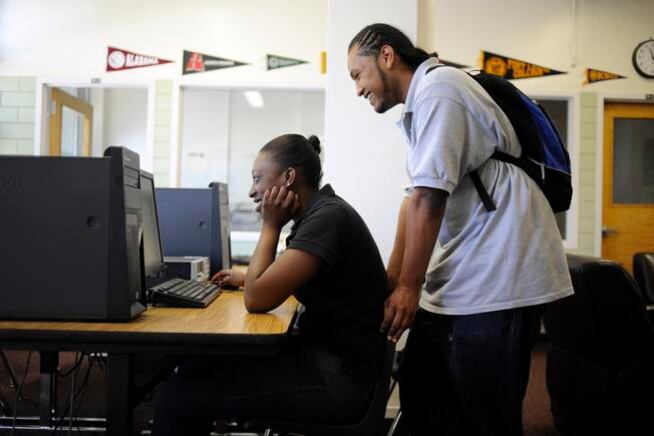Want news like this in your inbox every month? Beyond High School is a monthly email newsletter about going to college in Colorado. Sign up for updates here.
Welcome to the Beyond High School newsletter.
October marks the start of a new Free Application for Federal Student Aid application cycle for students nationwide.
It’s easily one of the more confusing and daunting tasks in the process of going to college. After all, you’ll need a slew of personal information and tax and income documents that begin to pile up rather quickly.
But there’s at least some relief coming for students to make it a little easier to fill out the FAFSA. Changes, some big and some small, are coming.
That’s good news for students and advisors. The application process happens to be one of the more important, especially for low-income students. By filling out the application, students can become eligible for thousands in federal aid to help with college expenses.
And FAFSA also serves as an indicator of how many high school students will head to college. Unfortunately, Colorado ranks near the bottom in FAFSA completion rates among high school students.
If you need tips and advice, read our take on what parents, students, and teachers should know about the process.
Now let’s get into a few of the changes on the horizon.
A shorter FAFSA form
This is the big one. Counselors told me it can take about 45 minutes to complete the form with their help. It can take families filling it out on their own more than 2 hours.
FAFSA currently has 108 questions. The new form next fall will include only 36.
The College Place-Colorado Director Chevy Lowe said she’s the type of person who will believe it takes less time to fill out when she sees it. But the reduced number of questions definitely has her excited and should reduce the number of people who get deterred by its length.
“I’m for anything that’s not going to overwhelm families,” Lowe said.
A crucial name change
Counselors told me numerous times that the “Expected Family Contribution” line tripped up families more often than not.
Often they’d get a question about whether they needed to pay that money right away. Or did it mean that’s exactly what they were on the hook for?
The new form will instead call that portion the “Student Aid Index.” While that’s still confusing, the matrix generated by the federal government at least won’t deter families from continuing the application because they think they have to pay a certain amount of money, said Monica Moore, a GEAR UP college adviser.
“It’s like with anything,” she said, “the bureaucracy of it can stifle the process.”
No selective services question
This one only impacts men.
If you aren’t registered for military selective services under the current FAFSA form, you aren’t eligible for federal student aid. Legally, you’re required to register if you’re between the ages of 18 and 25.
A new change will no longer link federal aid eligibility to selective services registration.
Denver Scholarship Foundation Future Center adviser Emily Weiss said she’s always found it strange that the federal government ties financial aid to draft status. She said students frequently ask what the selective services question means. That creates heavy conversations bogging down the process.
“It’s a whole conversation about how the draft hasn’t come into effect since 1972,” Weiss said.
Stories from Chalkbeat
- Five tips from Colorado experts on how to complete the FAFSA: Colorado counselors offered Chalkbeat Colorado advice for parents and students as they delve into the FAFSA.
- Colorado joins national collaborative aimed at putting a focus on older students: The REACH Collaborative intends to improve college for older students nationwide including in the Colorado Community College System.
- Can virtual advising shift where students go to college? Yes, but only a bit: Preliminary new research offers evidence that virtual advising can help students enroll in colleges that are a better fit.
- The difference between quitting and graduating? Sometimes, it’s just one person who cares: A personal essay on why every college student deserves someone to help them find their way through college.
What We’re Reading
- Class of COVID: 2021’s graduates are struggling more and feeling the stress Education Week
- 3 Native American women head to college in the pandemic. Will they get a sophomore year? Hechinger Report
- How can universities improve Black student representation? A Pitt professor offered a blueprint in the 1970s. PublicSource via Open Campus
- Pressure is on in CU president search as school and student leaders seek diversity, funding The Denver Post
- Colorado’s college campuses have become COVID vaccine islands, with lower case rates than the surrounding areas CPR
- What’s a college degree worth? The Chronicle of Higher Education






